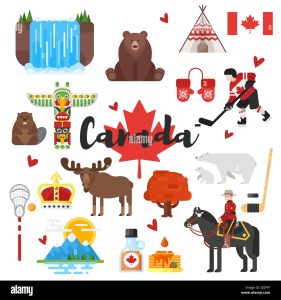4 Chapter Four: Decolonizing Sport
These are difficult stories. We bear witness in this chapter to the role of sport in furthering the settler colonial projects throughout Turtle Island. Here are some supports to access in the community and from a distance:
First Peoples House of Learning Cultural Support & Counselling
Niijkiwendidaa Anishnaabekwag Services Circle (Counselling & Healing Services for Indigenous Women & their Families) – 1-800-663-2696
Nogojiwanong Friendship Centre (705) 775-0387
Peterborough Community Counselling Resource Centre: (705) 742-4258
Hope for Wellness – Indigenous help line (online chat also available) – 1-855-242-3310
LGBT Youthline: askus@youthline.ca or text (647)694-4275
National Indian Residential School Crisis Line – 1-866-925-4419
Talk4Healing (a culturally-grounded helpline for Indigenous women):1-855-5544-HEAL
Section One: History
A) The Residential School System
Exercise 1: Notebook Prompt
We are asked to honour these stories with open hearts and open minds.
Which part of the chapter stood out to you? What were your feelings as you read it? (50 words)
| The one part of the chapter that stood up to me was the survivor explaining the loss of their identity, culture and language. It is so sad to read about the feelings and abuse they endured in the past century. I feel the deep sense of anger and despair in their life. However, I feel happy for their sense of resilience and bravery to share their stories.
|
B) Keywords
Exercise 2: Notebook Prompt
Briefly define (point form is fine) one of the keywords in the padlet (may be one that you added yourself).
Keywords: Culture Genocide
|
C) Settler Colonialism
Exercise 3: Complete the Activities
Exercise 4: Notebook Prompt
Although we have discussed in this module how the colonial project sought to suppress Indigenous cultures, it is important to note that it also appropriates and adapts Indigenous cultures and “body movement practices” (75) as part of a larger endeavour to “make settlers Indigenous” (75).
What does this look like? (write 2 or 3 sentences)
| Settler Colonialism would seize Indigenous culture by taking their tradition without proper credit or recognition. Examples include using the indigenous symbols as a tool of fashion, sports, or entertainment while the indigenous communities struggle to receive any form of basic human rights. This method attempts to make settlers feel a connection to the land while ignoring the ongoing struggles and history of the indigenous people.
|
D) The Colonial Archive
Exercise 5: Complete the Activities
Section Two: Reconciliation
A) Reconciliation?
Exercise 6: Activity and Notebook Prompt
Visit the story called “The Skate” for an in-depth exploration of sport in the residential school system. At the bottom of the page you will see four questions to which you may respond by tweet, facebook message, or email:
How much freedom did you have to play as a child?
What values do we learn from different sports and games?
When residential staff took photos, what impression did they try to create?
Answer one of these questions (drawing on what you have learned in section one of this module or prior reading) and record it in your Notebook.
Chosen Question: When residential staff took photos, what impression did they try to create?
|
B) Redefining Sport
B) Sport as Medicine
Exercise 7: Notebook Prompt
Make note of the many ways sport is considered medicine by the people interviewed in this video.
|
C) Sport For development
Exercise 7: Notebook Prompt
What does Waneek Horn-Miller mean when she says that the government is “trying but still approaching Indigenous sport development in a very colonial way”?
|
Exercise 8: Padlet Prompt
Add an image or brief comment reflecting some of “binding cultural symbols that constitute Canadian hockey discourse in Canada.” Record your responses in your Notebook as well.
 This image represent the core culture of the Canadian Hockey. The picture represent the acknowledgement of the indigenous communities as a first people to arrive in Canada. The image also represent how Canadian hockey values the Maple leaf, reindeer and beaver in Canada This image represent the core culture of the Canadian Hockey. The picture represent the acknowledgement of the indigenous communities as a first people to arrive in Canada. The image also represent how Canadian hockey values the Maple leaf, reindeer and beaver in Canada
|
Section Three: Decolonization
Please see the major assignment for this half of the term in the final section of this chapter.

